Back in the 1970s competition in the SLR camera market was fierce. Most companies needed to innovate regularly to maintain their profile and market share. Konica had been building up their Autoreflex system for some years. With the T3 they had produced a camera that did pretty much everything and was backed by a highly respectable system. However, there was still a need to keep up with trends and innovate.
A new entry level camera
Like many other manufacturers, Konica produced an ‘entry level’ model. These cheaper models generally (but not always) lost the top shutter speed. They also tended to lack a depth of field preview and a self-timer.
Konica’s original entry level line was the ‘Autoreflex A’ series. It was the same basic body as the T, but lacked the 1/1000 shutter speed, the shutter speeds in the viewfinder, depth-of-field stop down, self-timer and double exposure switch.
Konica’s innovation for the mid 1970s was prompted by what Olympus had done a few years earlier. It was to be a smaller, lighter camera than the (weighty) T3. It was also intended as an ‘entry level’ model. For their new camera they produced a smaller body, using a newly available compact version of the Copal Square shutter. Another innovation was to make the top and bottom plates out of a high quality engineering plastic.
Differentiation
With any of these entry level models, it was important to differentiate. This was a typical entry level camera in that it lacked a depth of field preview, but it did feature a self-timer and a 1/1000 top shutter speed. Like the ‘A’ cameras before it, it also lacked an indication of shutter speed in the viewfinder and double exposure switch from the T3. No battery check means you have to keep an eye on the needle in the viewfinder to make sure there is still power. The other main ‘economy’ was that it lacked speeds below 1/8, with a range from 1/1000-1/8 plus B. There are not many photographers who will miss the speeds from ¼-1 second.
The camera was called the Autoreflex TC (‘T Compact’) in most markets, but was marketed in Japan as the A-Com 1 (‘A-Compact’).
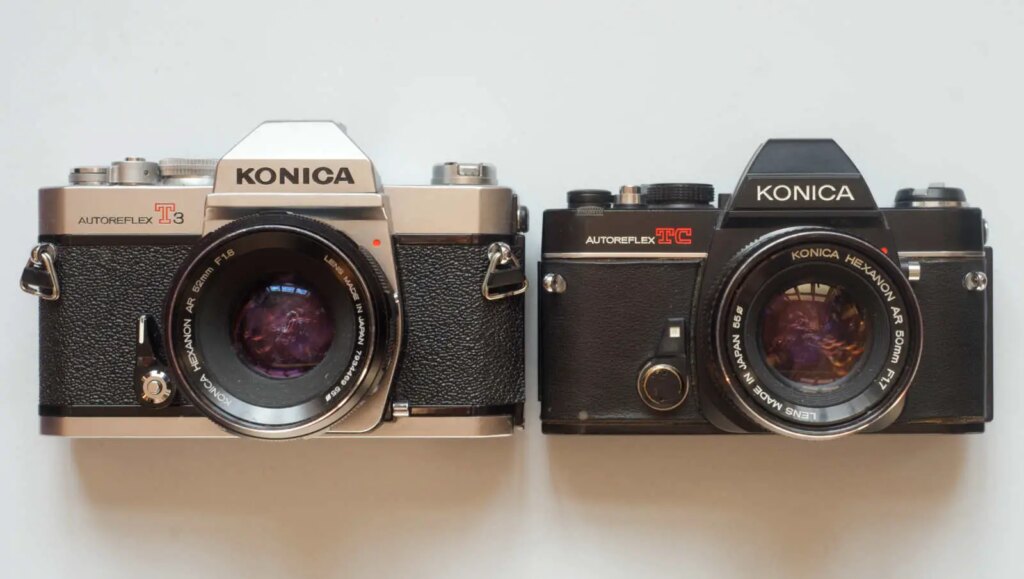
It was somewhat of a hit. At one time it claimed to be the lightest 35 mm SLR (even in comparison to the Pentax ME, which initially had a brass top-plate). Finished in black, it was affordable and it looked the part. It sold very well.
Pushing the concept up a level
The next logical move was to use this more modern form-factor for the top-flight camera. Two years after the release of the TC, the T4 combined the silhouette of the TC with the features of the T3.
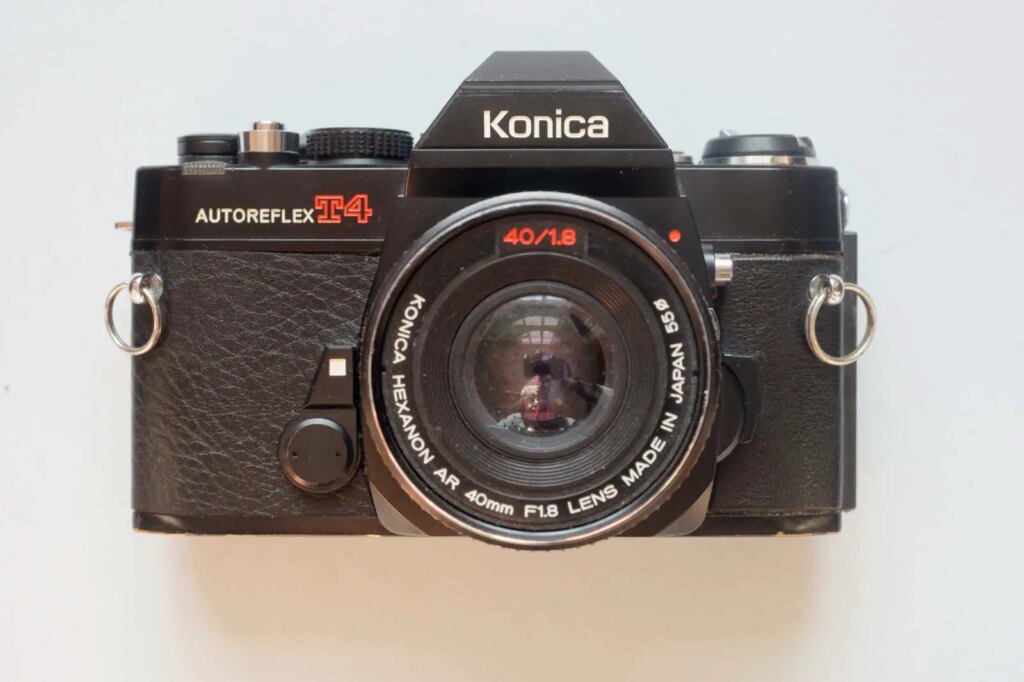
One of the features that the T3 lacked compared to top end cameras from other manufacturers was a motor drive or autowinder. For some reason, people really wanted to race through their 36 frames at a rate of knots. As the producer of Sakura film, Konica must have quite liked this trend. The T4 took an autowinder. It bolted onto the (metal) base of the T4, and it enabled you to run through a whole roll of film in around 20 seconds.
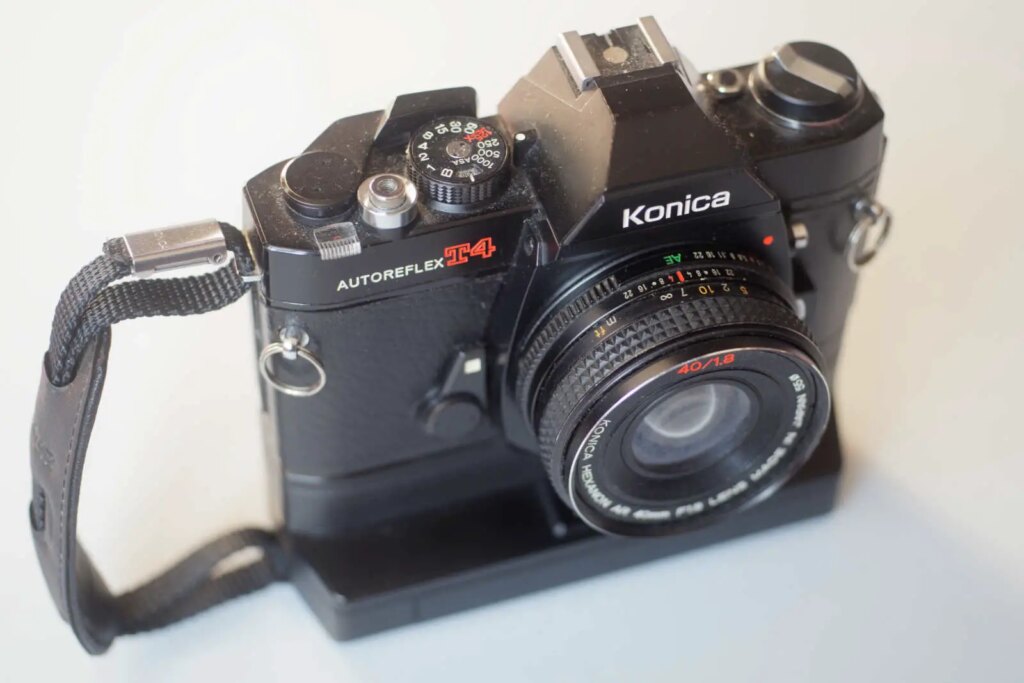
The T4 has a full range of speeds from 1-1/1000. It has a depth of field preview. It even has a bullet-proof multiple exposure switch like the T3. Its battery check was also easier to use than the one on the T3. However, like the TC, it lacked the indicator of the set shutter speed in the viewfinder.
Common features
Both of these Autoreflex cameras feature a pookie plastic body covering, which does not age well. This material will be familiar to users of the Minolta XD cameras. An industry for the supply of replacement leathers has grown up in their wake. Both cameras take mercury-based PX625 batteries, although you can get away with fitting Zinc-Air 675 replacements.
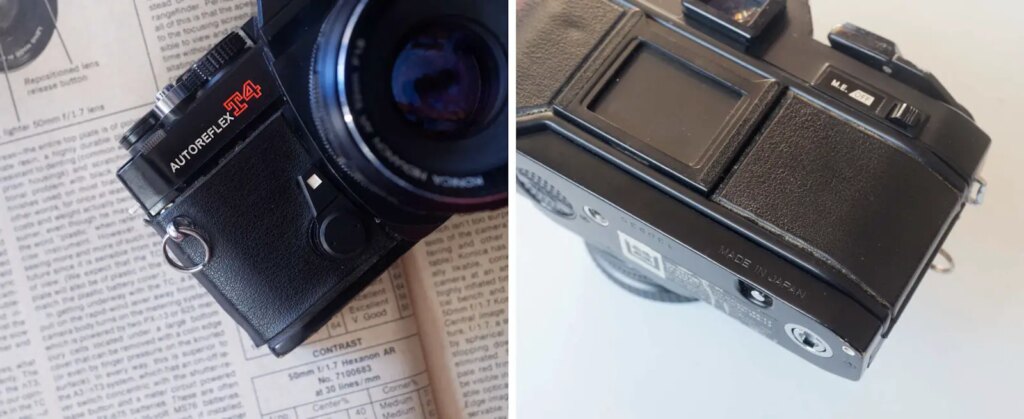
Weight and handling are good. The meter switch, built into the wind-on lever is a very neat design. You pull it out to turn the meter on and the lever only parks back on the body when you press the button to switch it off. You just don’t tend to leave the meter switched on accidentally. Both cameras feature impressively sized pressure plates to keep the film nice and flat.
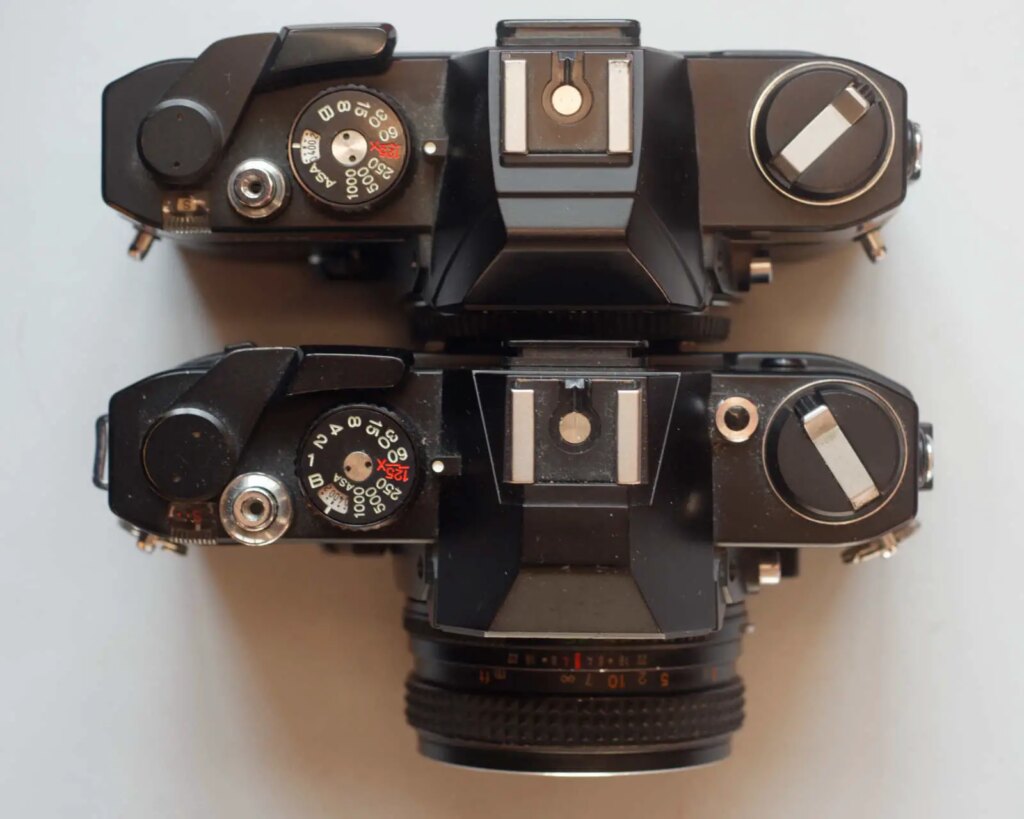
T4 Issues
The T4 is a good camera, but in comparison to the T3 it is a little disappointing. It never sold in anything like the numbers that the TC did. It went out of production a clear two years before the TC.
Depth of field preview
The T3 incorporated an exposure lock into the first action of the depth of field preview lever, so the meter traps the needle determining aperture and then closes the lens down to that f-stop.
Like the models prior to the T3, the T4 lacks that initial exposure lock. It will either close the lens down fully (to f/16 or f/22 depending on the lens), or to the value set on the aperture ring of the lens. This makes getting a quick idea of depth of field much more complex. You have to take the camera off automatic, set a value and then operate the control before returning to automatic exposure.
There is an alternative technique, but this involves a half press on the shutter release to lock the exposure in auto, followed by operating the depth of field preview with the other hand. Operation is a bit awkward.
Autowinder exposure functionality
Although it has a very nice autowinder, the trap needle exposure used in the Autoreflexes will lock exposure to the first frame in a sequence. A fresh meter reading is only taken when you lift your finger off the shutter release. This is a bit limiting.
Last gasp outsourcing
After the T4, Konica switched away from trap-needle exposure, towards electronic shutters and metering that suited autowinders better (these were often built-in). However, the last SLR camera that Konica released with the AR mount was a step back to the TC specification – three years after the earlier camera had been withdrawn. The TC-X had trap needle metering and a mechanical shutter. It also featured DX coding and drew power from an AA or AAA battery (the copy I have takes a single AAA). The TC-X was manufactured by Cosina for Konica. It is reputed to have been the first all plastic SLR. In addition to the outer covers (usually top and bottom, but with the TC-X, front and rear), the underlying frame is plastic.
Cosina are a highly able company, and they are capable of producing great stuff. However, this is a camera built to a budget. Build quality is not really comparable to the earlier Konica SLRs, but is better than, for instance, the (higher specced and more capable) Praktica BX20.
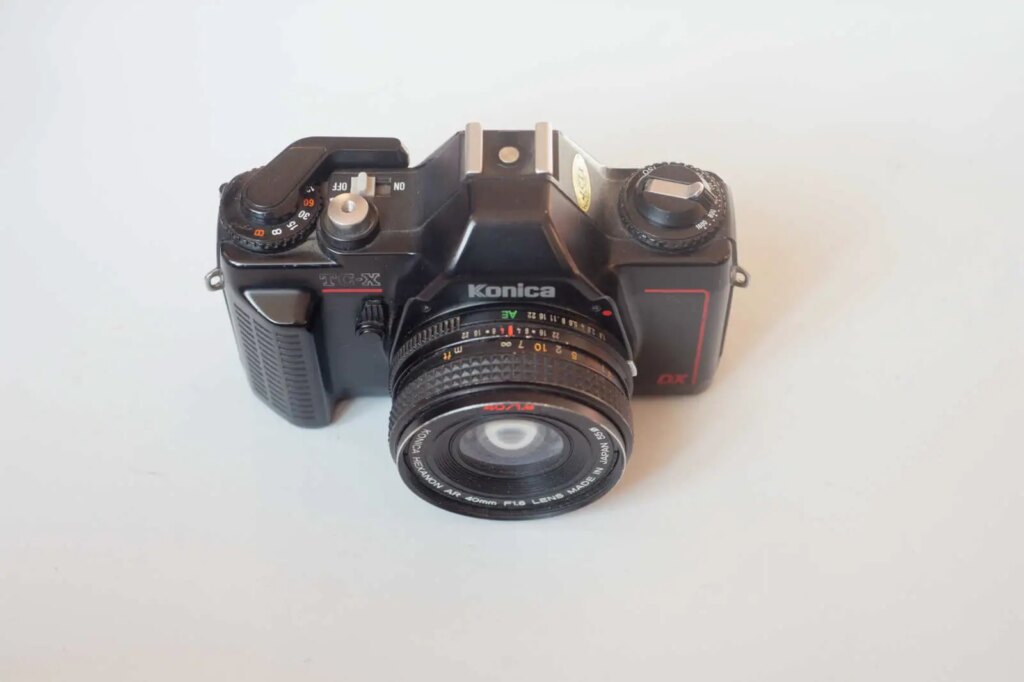
Everything is a bit of a step-down from the original TC. The plastics are cheaper. The viewfinder display is more basic and doesn’t play nicely with wide lenses, where the aperture scale tends to go dark, making the meter needle difficult to see. The on-off switch is not as clever a design. The shutter release doesn’t have as good a feel. The self-timer is a bit cheap and nasty and the flash synch is slower. However the batteries are easier and cheaper to source and the little grip on the right of the body makes the camera easier to hold.
Pictures – Konica TC
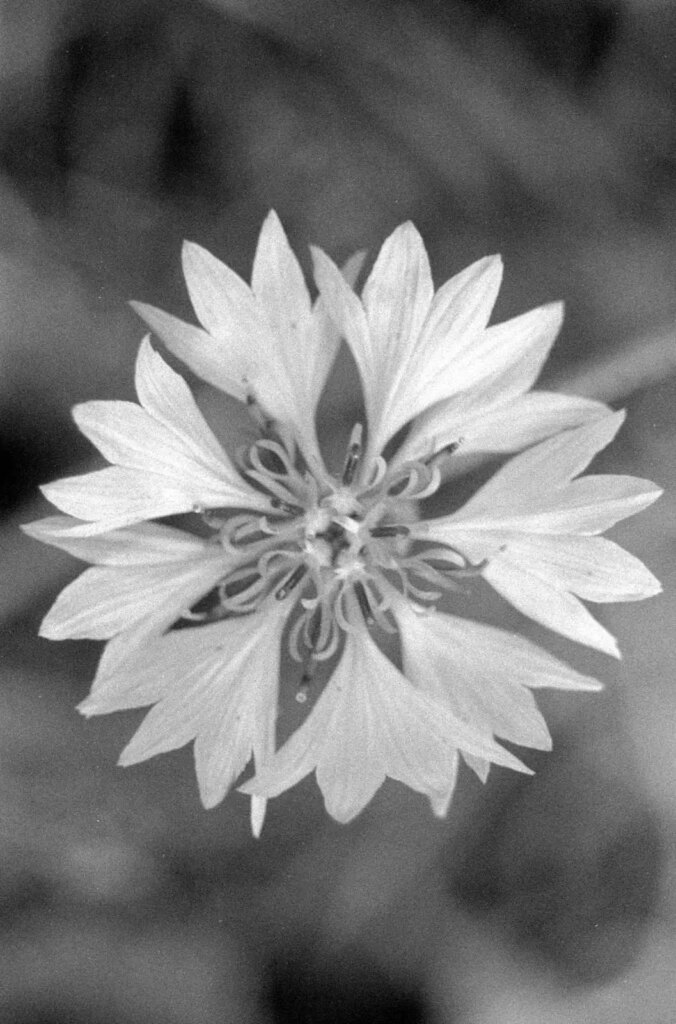

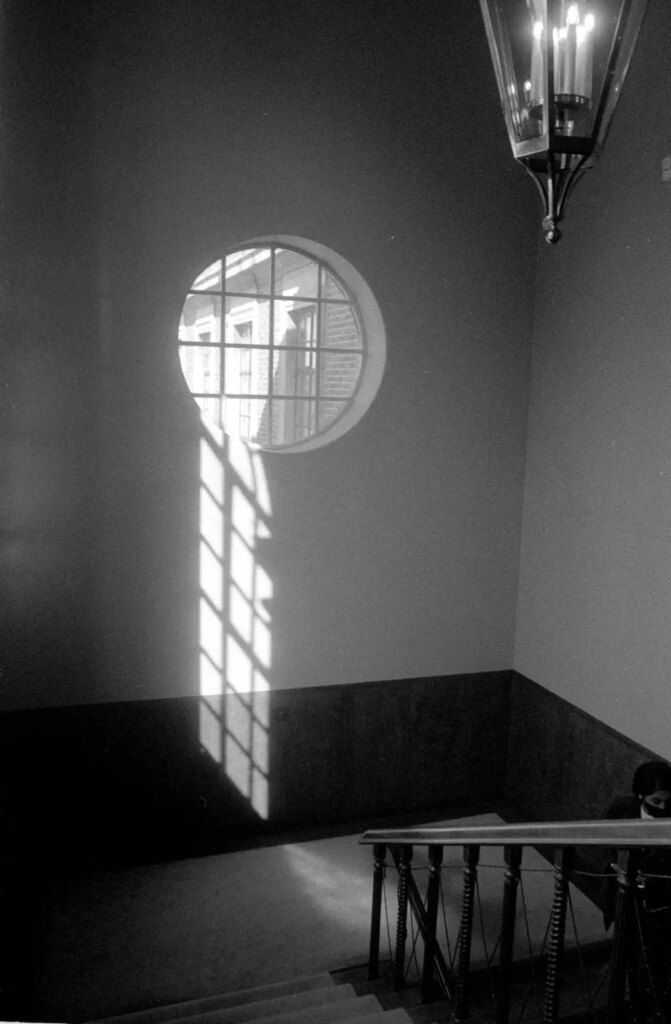
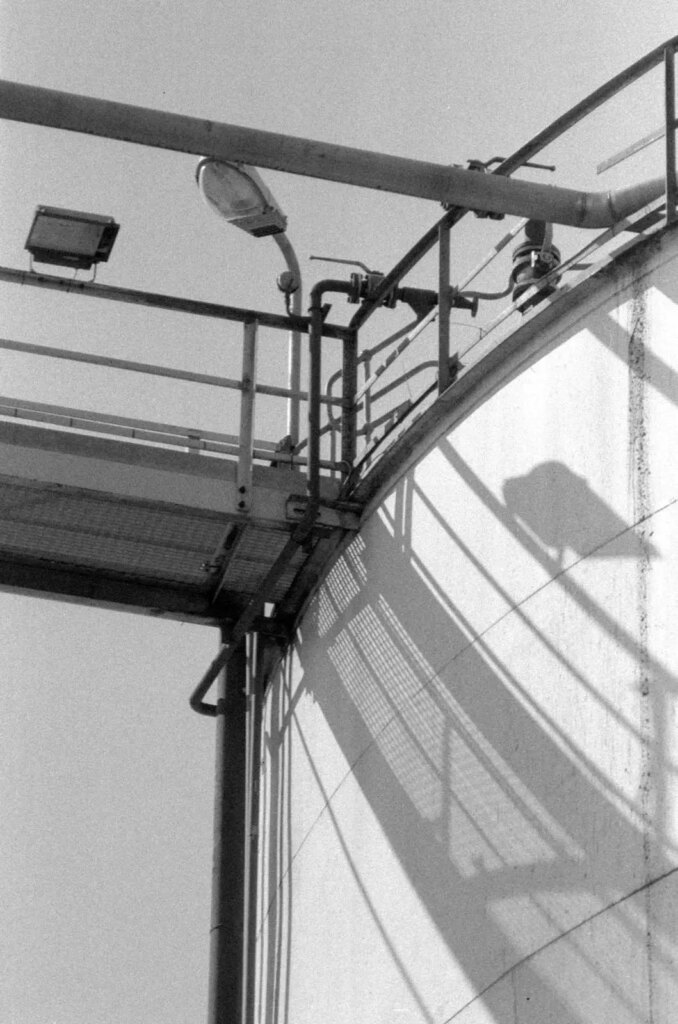
Pictures – Konica T4
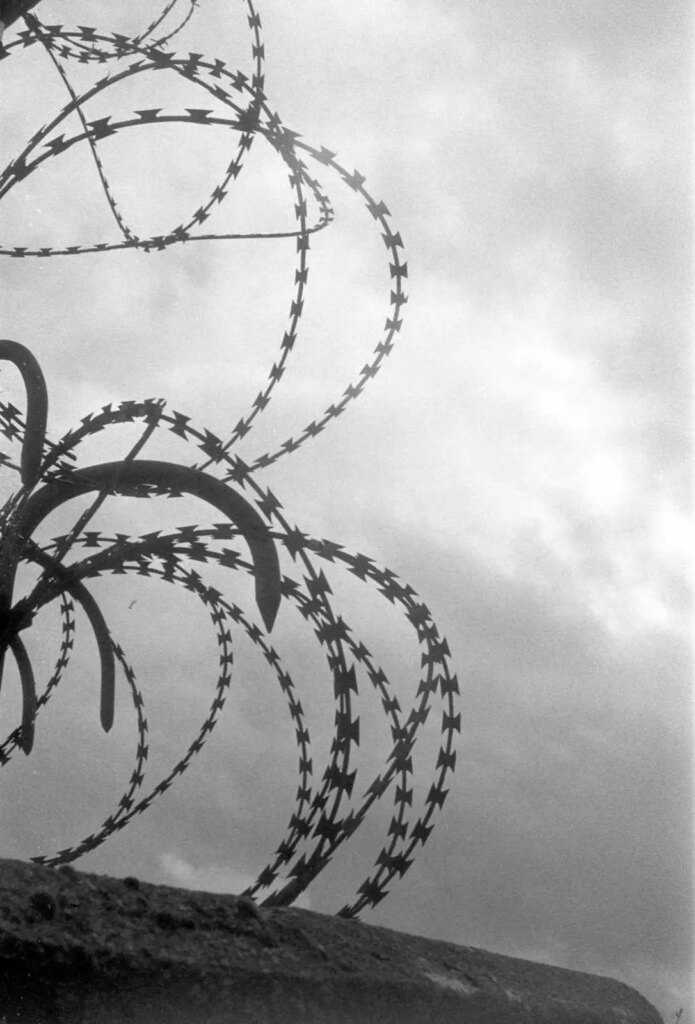
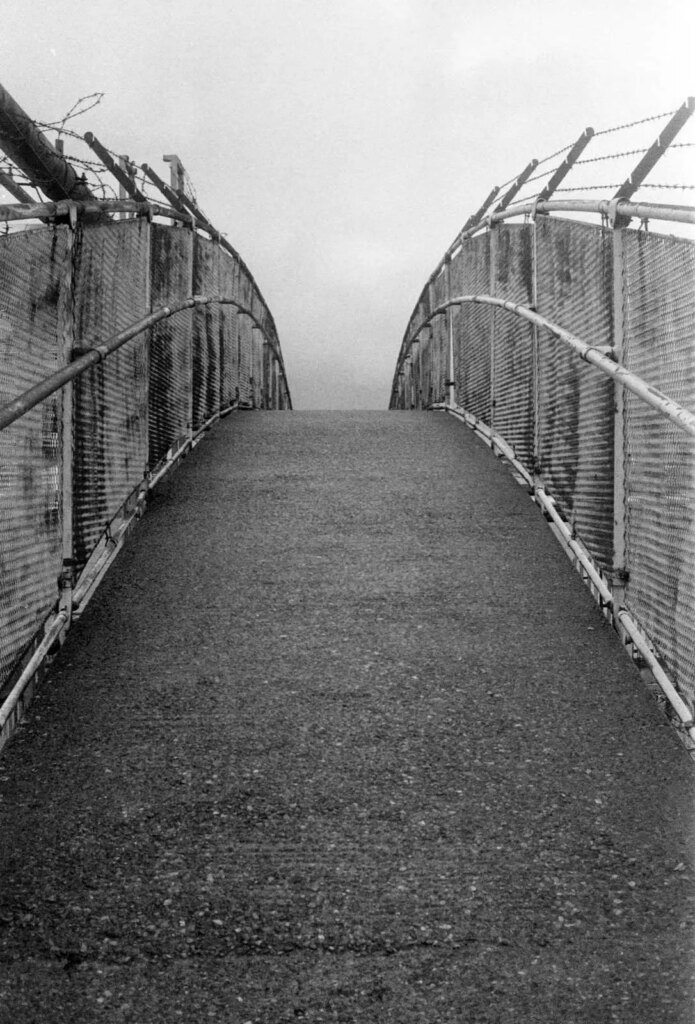
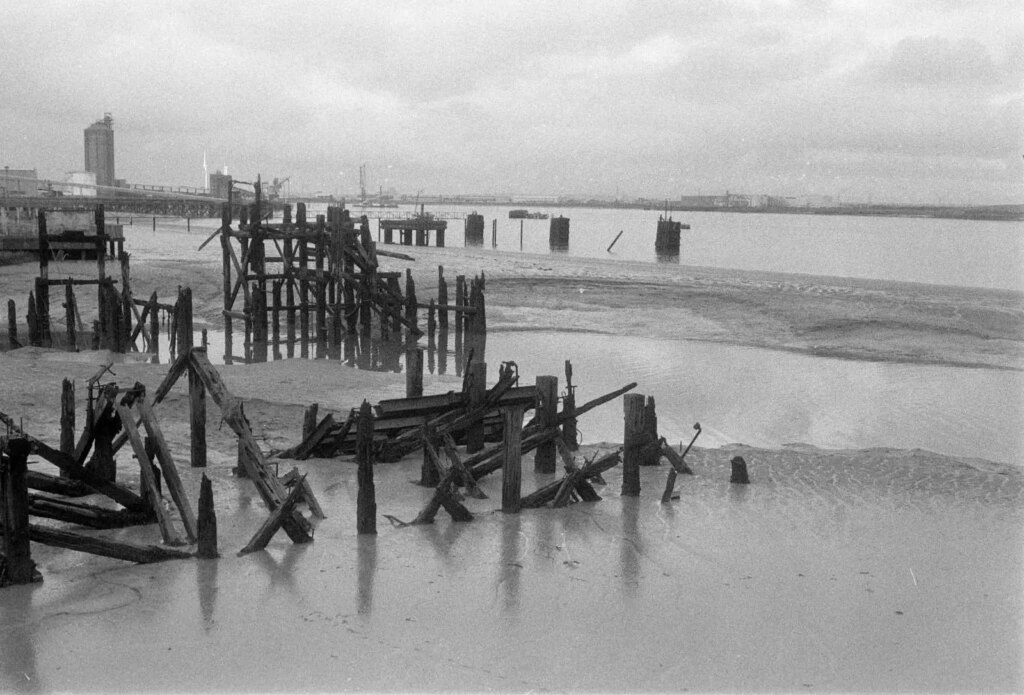
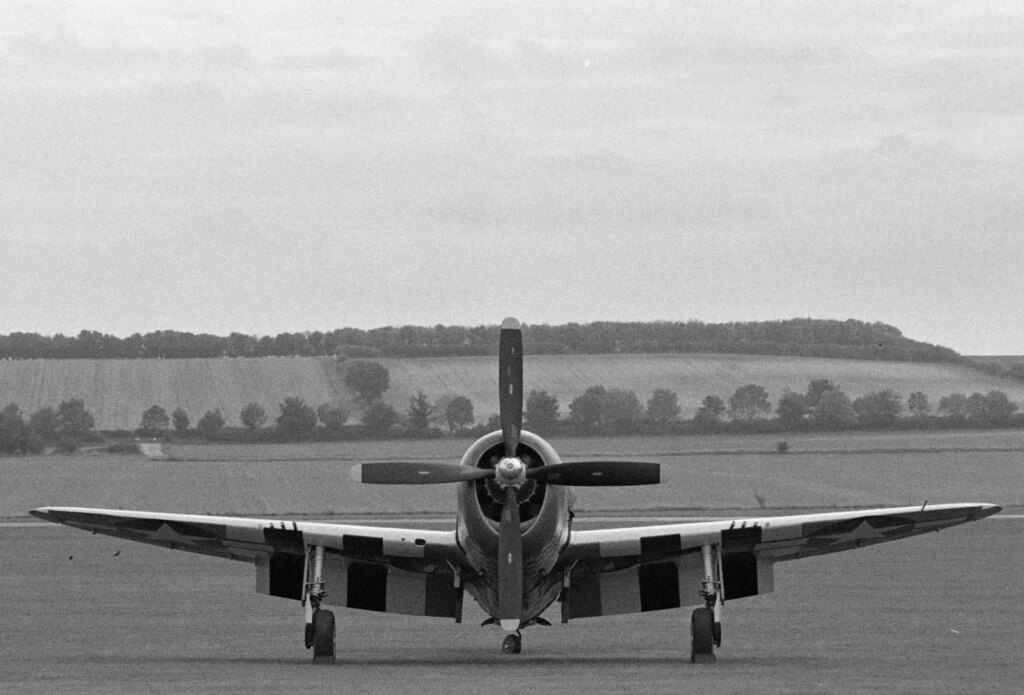
Pictures – Konica TC-X
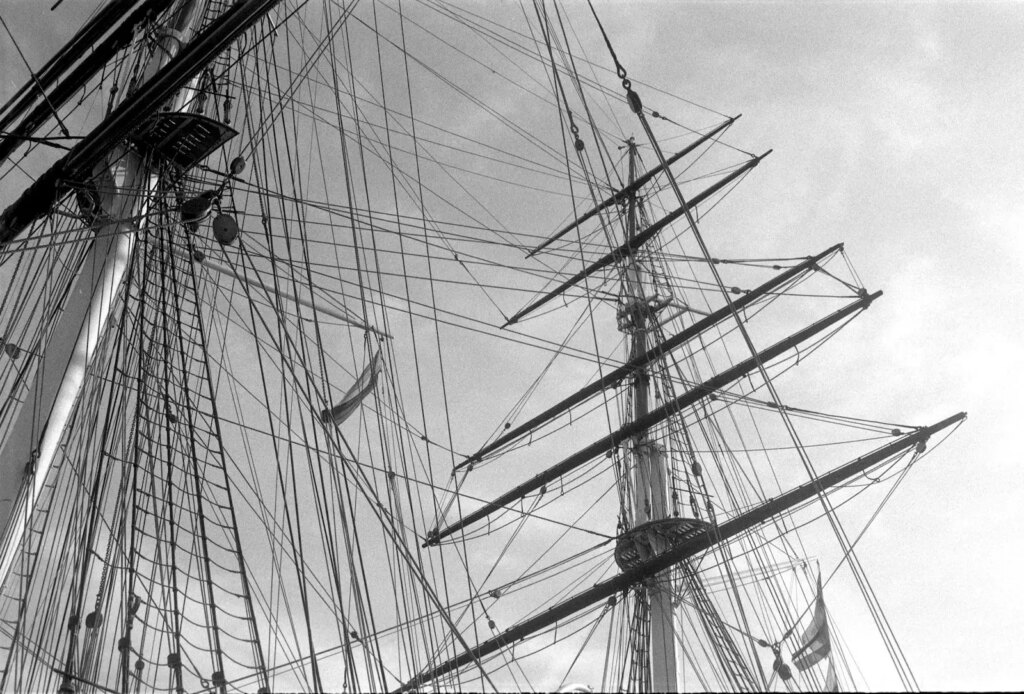
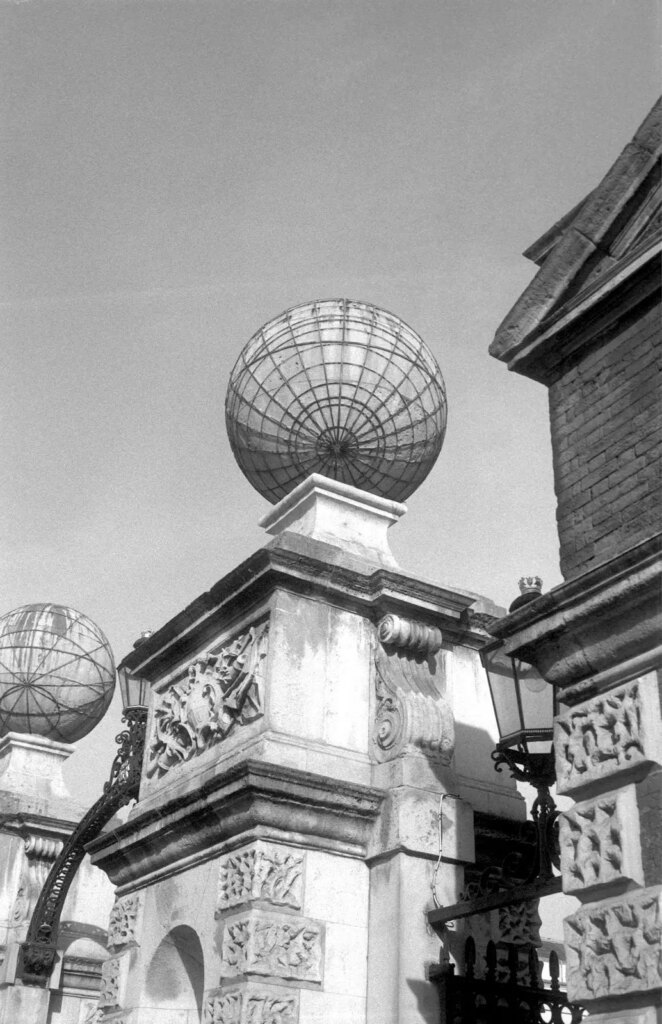
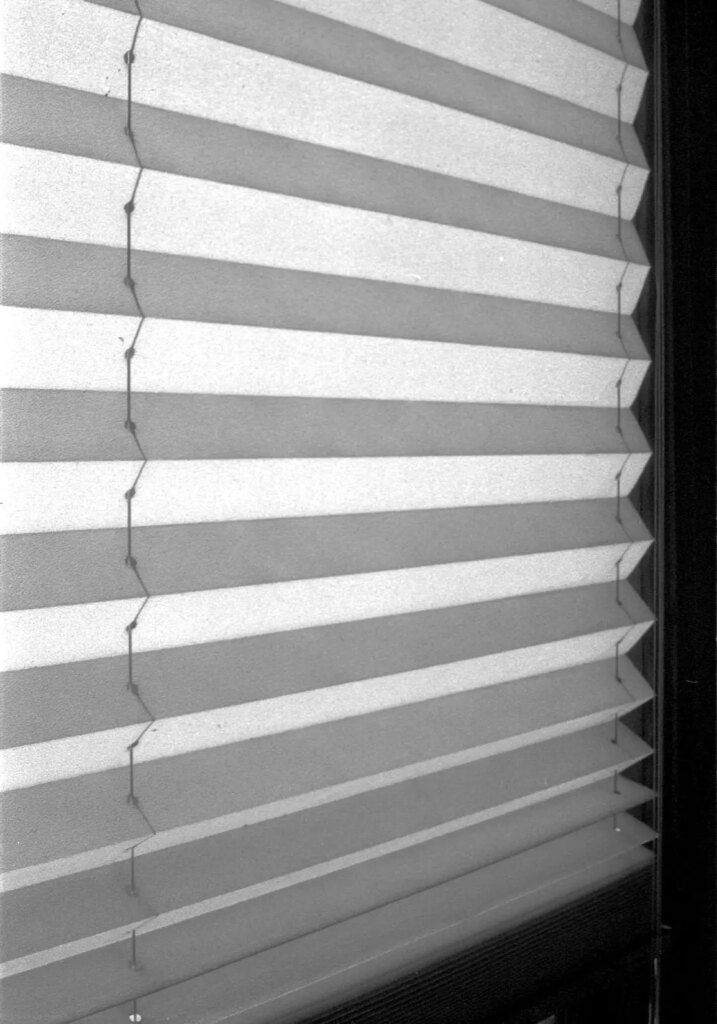
Conclusion
Both the original Konica TC and the Konica T4 are great cameras to use. The trap-needle exposure-lock-on-initial-press used on all the Autoreflexes is very easy to use effectively. Given the limitations of the T4’s depth of field preview and autowinder, I’d suggest that the original TC gives pretty much as good an experience unless you really want to shoot at 1-1/4 of a second, or be profligate with film. The TC-X is OK as long as you don’t want to use lenses wider than 40 mm, but is nowhere near as nice to use as the other two. As I have the T4, I will use it whenever the T3 seems inappropriate.
The end
Konica abandoned SLR manufacture in 1987, but carried on producing compacts and got heavily into mini-labs. In the early days of the new millennium they merged with Minolta and then got out of cameras and film entirely in 2006 to concentrate on copiers and business machines.
Share this post:
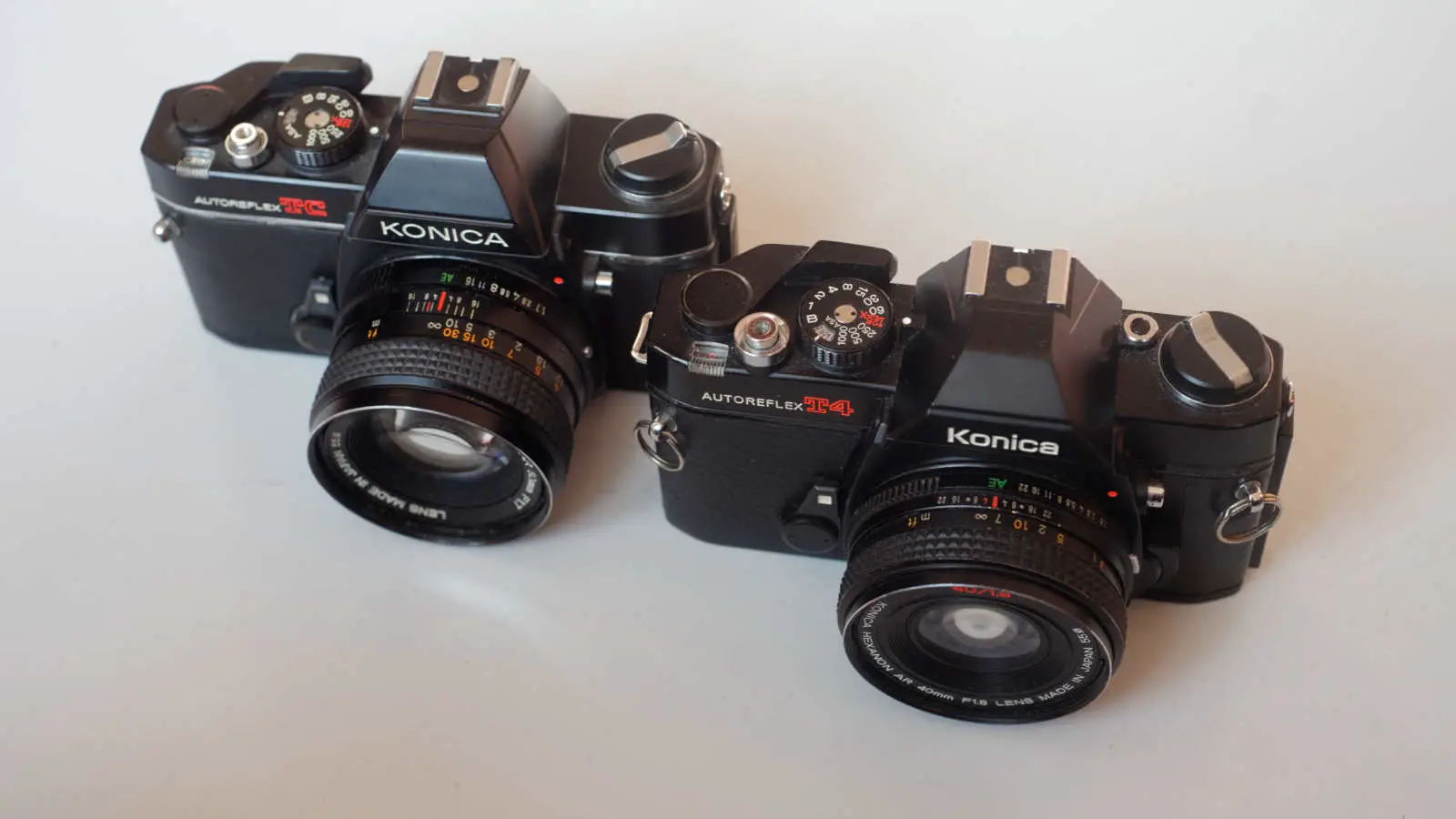








Comments
Ibraar Hussain on Konica TC and T4 SLRs – The Last of the Steam Powered Trains
Comment posted: 28/04/2023
The photos are wonderful, lovely delicate tones. The play of light in the window and the banisters I really liked a lot and the fox photo is fantastic
Comment posted: 28/04/2023
Comment posted: 28/04/2023
Comment posted: 28/04/2023
Comment posted: 28/04/2023
Comment posted: 28/04/2023
Iain Paterson on Konica TC and T4 SLRs – The Last of the Steam Powered Trains
Comment posted: 28/04/2023
Comment posted: 28/04/2023
Comment posted: 28/04/2023
Comment posted: 28/04/2023
zidane on Konica TC and T4 SLRs – The Last of the Steam Powered Trains
Comment posted: 09/05/2023